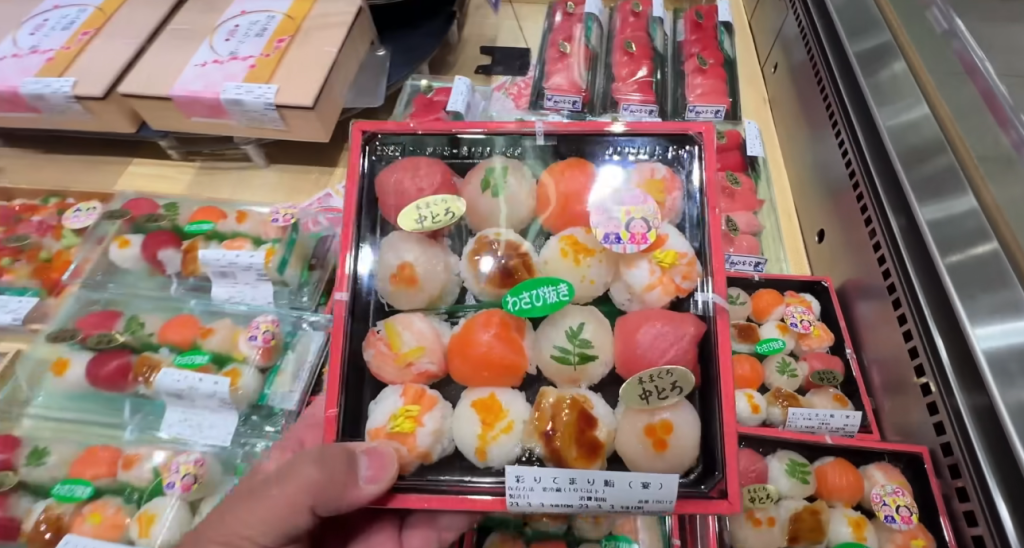Supermarket Sushi vs Restaurant Sushi: Difference in Quality, Taste and Value
In Japan, sushi is a part of the cultural fabric, with sushi shops and restaurants found on practically every street corner. But Japan has also seen the rise of supermarket sushi sections. This has sparked an ongoing debate among locals about how packaged sushi from the market compares to sushi from restaurants.

Restaurant Sushi Better Quality
Those who favor sushi-ya restaurants argue for the superior quality and traditional experience. They say restaurants use only the freshest seafood from that morning, handled by expert chefs. The vinegared rice is meticulously prepared and serves as the foundation.
Restaurants offer regional specialties like Hokkaido uni sea urchin and seasonal delicacies.
Many Japanese sushi connoisseurs insist that supermarket sushi is inferior, with subpar rice that loses its texture. They also criticize the limited selection, which leans basic like tuna or salmon nigiri.
Convenience and Cheaper Sushi at Supermarkets

However, fans of supermarket sushi point to the lower prices and convenience as big pluses. At some supermarkets, it can be less than half the cost of restaurant sushi.

Takashimaya depachika stock freshly made sushi every morning, providing a quicker alternative to waiting at popular sushi spots. Devotees argue it has improved over the years and satisfies a sushi fix. Some markets even have sushi counters where customers can watch staff prepare it on-site.

Many see merits to both options. They might stop at the market for an affordable sushi lunch, then visit their favorite sushi-ya in the evening for a nice meal out with better quality fish and service.

Parents find the supermarket version handy for sending obento lunchboxes with their kids. Workers can easily grab tasty ready-to-eat sushi for their break. The general consensus is that while supermarket sushi might fall short of sushi-ya standards, it meets the needs of busy shoppers.

At the end of the day, it’s a matter of personal taste and priorities. Purists argue that true, high-end sushi relies on skilled chefs and the day’s catch. But for working professionals and families seeking fast, inexpensive sushi, the supermarket provides a serviceable alternative.
Neither side is right or wrong; it comes down to the situation and customer. The popularity of both market and restaurant sushi speaks to the esteemed place it holds in Japanese food culture, whether as a cheap bite on-the-go or a fine dining experience.
Learn Japanese
What does the “Ya” in a restaurant sign “Sushi Ya” mean?
In Japanese, “ya” (屋) is a suffix that signifies a shop or restaurant. For example, “sushi ya” translates to “sushi shop” or “sushi restaurant.” The “ya” implies that it is an establishment specializing in selling or serving sushi. Other common restaurant names using “ya” include “ramen ya” for a ramen shop and “izakaya” for a Japanese-style pub. The suffix gives clarity that it is a dining business, rather than someone’s home. So next time you see a Japanese restaurant ending in “ya,” you’ll know it indicates a specialty eatery for that type of cuisine.
“Depachika”: Japan’s Basement-Level Food Markets
A depachika (デパ地下) is a gourmet food hall located in the basement of a Japanese department store. The name is a combination of the words “depato” (department store) and “chika” (basement). Depachikas are renowned for their wide variety of high-quality food products, including prepared meals, bento boxes, sweets, and fresh produce. They are often considered to be a must-visit destination for foodies and tourists alike.
Depachikas are typically organized into different sections, each specializing in a particular type of food. For example, there may be sections for Japanese sweets, Western pastries, sushi, meat and seafood, and vegetables. The food is beautifully displayed and often packaged in elaborate gift boxes.
Depachikas are a popular place to buy food for both everyday meals and special occasions. They are also a great place to sample new and unique foods.